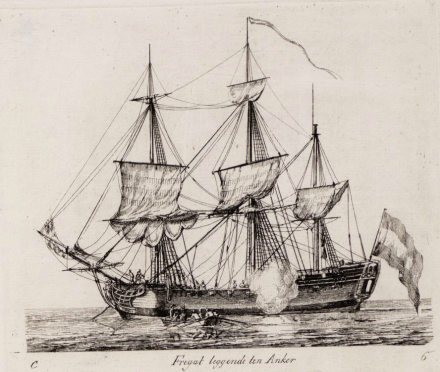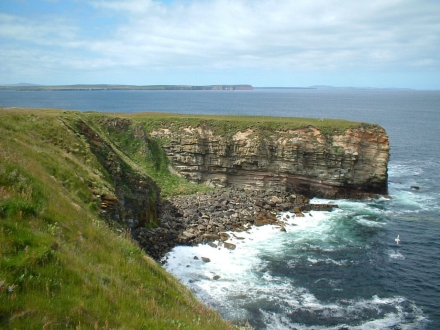History
Wrecking of the Utrecht
Throughout the period of the Napoleonic Wars (1803-1815), Britain was at war with the French Republic. For the Kingdom of Holland (1806-1810), a French client-state and predecessor to the Kingdom of the Netherlands, British naval supremacy presented a serious obstacle in the contacts with its colonies in the East and West Indies. Therefore, when a supply mission to the Dutch colony of Curacao was planned in late 1806, this called for a secretive approach.
On 15 February 1807, the 32 gun frigate Utrecht, previously known as the Admiralty vessel Orpheus, set sail from Hellevoetsluis in the Netherlands, carrying 200 soldiers and various supplies destined for Curacao. To avoid the blockade, the normal route through the Channel was not chosen, they went north of Scotland in stead of this. Captain Albertus Costerus (Albert Koster) managed to successfully direct the ship through the North Sea without attracting the attention of patrolling British warships. When they had nearly reached the Atlantic, a heavy storm set in. The storm kept growing more severe, and finally at Sanday, one of the Orkney Islands, the Utrecht was smashed against the cliffs. Some thirty men were lost in the incident, along with the ship. The survivors were taken prisoner by the British.

Description
Associated with: Dutch Royal Navy, Kingdom of Holland.
Condition: Unknown.
Institutions involved: Nautical Archaeology Society, Royal Commission on the Ancient and Historical Monuments of Scotland.
Status
The search for the Utrecht
Since 2006, several surveys of the site where the Utrecht was wrecked were organised by Kevin Heath and Bobby Forbes of the Nautical Archaeology Society. The aim of the project is not only to locate the wreck, but also to locate the last resting place of the sailors that died in the incident and were reportedly buried on shore. When this is found, the team hopes to raise a memorial to these men. Some traces of the Utrecht have been found on the seabed.

References
- Jonge, J. C., de & J.K.J. de Jonge.
Geschiedenis van het Nederlandsche Zeewezen.
A.C. Kruseman Haarlem. - Article on the Utrecht by RCAHMS.
- Archaeology orkney.
Finding the Utrecht.